By Lynn Picknett and Clive Prince | book-of-thoth.com
Article received from Light Eye
Adapted from a lecture by Lynn Picknett and Clive Prince at the Saunière Society Symposium, Conway Hall, London [from http://www.templarlodge.com/stargate.html]. Submitted by SolAris
Synarchistic Excerpt:
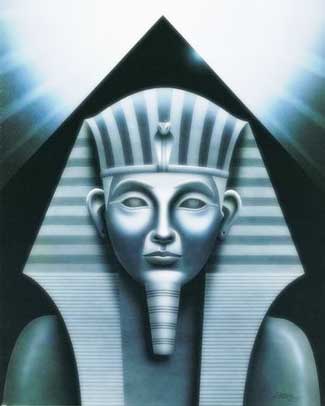 Sphinx/Pyramid from: art.com |
"Essentially, Synarchy advocates government by secret society -- or, in its own terms, by an elite of enlightened initiates who rule from behind the scenes. It therefore doesn’t matter which political party holds power in a state -- or even what political system that state has...
"St-Yves believed in the existence of spiritually superior beings that could be contacted telepathically. His elite would be made up of people who were in communication with them. He himself claimed that he was in touch with these beings, and that they actually gave him the principles of Synarchy."
As we approach the Millennium, there is a growing sense of expectancy that some event, or revelation, will change the world forever. For fundamentalist Christians it is the Second Coming -- but you don’t have to be a fundamentalist Christian to share the belief that the world is soon going to change, and change radically.
The one thing that many of these expectations have in common is the sense that the past is catching up with us -- that the transformation of our future will, in some way, be connected the ancient past. Ancient sites around the world are the focus of Millennium Fever -- but none more so than those of Egypt, and particularly the Giza Plateau. Many believe that some revelation connected with the Great Pyramid, or with the Sphinx, will be the trigger for a New Age.
Such expectancy, such hope, such belief is very, very potent. It is wide open for exploitation -- not just for financial gain, but for those who want to try to change the way we think. And that is what Lynn and I believe is happening. Our book, The Stargate Conspiracy, describes a 50- year-long plot to create, and then exploit, expectations about ancient Egypt as part of what amounts to a programme of social engineering. It is a very high-level plot that, essentially, aims to hijack the very real mysteries of ancient Egypt in order to push other quasi-religious and even political ideas.
Instrumental in this plot are the psychological warfare units of intelligence agencies. At the centre of the conspiracy is the manipulation of beliefs about the origins and history of human civilisation, in particular of beliefs about the existence of an advanced civilisation in the ancient past and its influence on the earliest known historical civilisations, primarily that of Egypt.
But the conspiracy uses ideas and concepts that have been around for quite a long time in the occult world. Our book explores the origins of those ideas, and shows how in recent years, they been pushed at the mainstream public. In brief, ideas about the origins and history of human civilisation that were developed in occult circles in the 19th century are now being promoted to the public as if they have been confirmed by recent research. The important point is that these ideas were originally developed to support specific systems of belief or doctrines - and some of those doctrines were, to say the least, highly questionable and often downright dangerous.
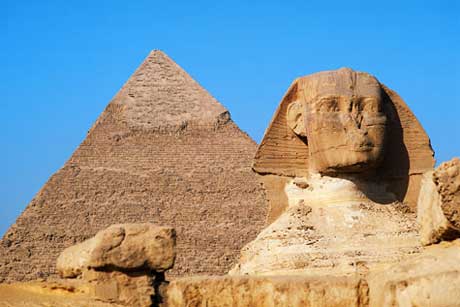
In the last few years we have seen a wave of new books about ancient Egypt that have captured the imaginations of millions of readers worldwide. The best-known names in this ‘Alternative Egypt’ field are Graham Hancock, Robert Bauval, and John Anthony West, and their works have been instrumental in arousing public interest in the very real mysteries of ancient Egypt. To be clear about this point, we are NOT saying that Hancock, Bauval and West are conscious participants in the conspiracy. But their IDEAS are certainly being used -- and have been to an extent shaped -- by the conspirators.
This article looks at one specific example of the way that 19th-century occult ideas have influenced recent developments in the Alternative Egypt field.The story begins with the Sphinx. Everybody will be familiar with the controversy surrounding claims that the Sphinx is far older than mainstream Egyptologists believe (which is about 4,500 years, ie it dates from around 2500 BC). This claim was made in 1990 as a result of a study of the erosion of the Sphinx and the walls of its enclosure.
The instigator of this research was the maverick alternative Egyptologist John Anthony West. In the 1970s, West had become interested in the work of R.A. Schwaller de Lubicz (1887-1961), the occult philosopher who, in the 1940s and 50s, wrote several books in French about the religion of ancient Egypt. Schwaller de Lubicz’s ideas have had enormous influence on alternative and New Age ideas about Egypt.Schwaller de Lubicz believed that the Sphinx was carved by visitors from Atlantis, and that it predated the ancient Egyptian civilisation by many thousands of years. He observed that the erosion on the Sphinx’s body and the walls of the enclosure appears to be the result of exposure to water, rather than wind-blown sand, and argued that it had been caused by a great flood -- the flood that destroyed Atlantis. John Anthony West agreed with this, and hoped to prove it scientifically.
In 1990, West managed to interest an American geologist, Robert Schoch, in the problem. Schoch made a study of the Sphinx and concluded that the erosion was due to water -- to centuries of exposure to rainfall. He pinpointed a period of extremely wet weather between 7000 and 5000 BC as being responsible. If he is right this would make the Sphinx at least 2,500 years older than it is supposed to be, which would mean a radical rethink about conventional ideas about the origins of the ancient Egyptian civilisation.
Most of you will be familiar with this, and many will accept the redating. However, Schoch’s work, and his conclusions, are still very controversial and the subject of debate. The recent book by Ian Lawton and Chris Ogilvie-Herald, Giza: The Truth, deals with this controversy in some detail, and presents evidence that raises serious questions about Schoch’s conclusions. However, the most relevant point to us is that, even if Schoch is right, his dates -- 7000-5000 BC -- are the oldest allowed by his data.
However, West (and following him Graham Hancock) has presented Schoch’s work as if it really supports a much, much earlier date. Most significantly, West uses Schoch’s work unashamedly as evidence that the Sphinx dates from at least 10000 BC, or perhaps even earlier. Ironically, after having brought in an expert to confirm his ideas, he then disregards Schoch’s expertise when it suits him.
West states that in his opinion there hasn’t been sufficient rainfall in Egypt in the period given by Schoch to account for the erosion. He states that ‘you really have to go back before 10000 BC to find a wet enough climate in Egypt to account for the weathering on this type and scale.’ Hancock has followed him -- writing that during the 11th millennium BC in Egypt ‘it rained and rained and rained’. This sounds very authoritative. But when we checked these claims, we found that, according to all the available sources on the climate of ancient Egypt, there simply was no wet period in the 11th Millennium BC.
So why are Hancock and West so keen to have us believe in that date? What does a difference of 3,500 years make, when even pushing the Sphinx back to 5000 BC would radically transform our ideas about the ancient Egyptianculture?
Partly this is to fit the pronouncements of the American psychic Edgar Cayce (1877-1945), who said that the Sphinx and Pyramids were built by survivors from Atlantis in 10500 BC. But it also fits the view of history used to justify another, very specific -- and in our view very alarming - form of occult philosophy. To understand this we have to go back to 19th century France, and a political-occult ideology called Synarchy. In Britain, Synarchy is not widely known even among those interested in esoteric movements and secret societies. This is very surprising, as Synarchy and its founder have been extraordinarily influential.
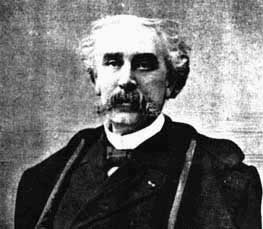 Alexandre St. Yves d'Alveydre (1842-1909) |
Essentially, Synarchy advocates government by secret society -- or, in its own terms, by an elite of enlightened initiates who rule from behind the scenes. It therefore doesn’t matter which political party holds power in a state -- or even what political system that state has. Synarchists would step in and take control of the key state institutions. St-Yyes identified three key pillars of society that, once under the control of his elite, would allow them to rule without the population even being aware of their existence. These were the political and social institutions, the economic institutions and the religious institutions.
Although Synarchy can therefore rule in any kind of state, for obvious reasons it finds itself more at home among totalitarian regimes (power is held by less people, and the ruling regime doesn’t change as often as in a democracy). It has therefore always attracted a greater following from the right. Synarchy is totally opposed to ideas of democracy and social equality, as it believes that some people -- ie Synarchists -- are natural leaders.
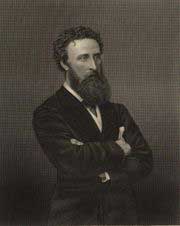 Edward Bulwer-Lytton, 1st Baron Lytton (1803-1873) |
St-Yves believed in the existence of spiritually superior beings that could be contacted telepathically. His elite would be made up of people who were in communication with them. He himself claimed that he was in touch with these beings, and that they actually gave him the principles of Synarchy. Saint-Yves drew upon many esoteric systems, from both East and West, in developing his ideas. For example, he regarded the medieval Knights Templar as the ultimate Synarchists of their day -- after all, they exerted control over the political, financial and religious life of medieval Europe, his three pillars of society.
Consequently, Saint-Yves incorporated ideas from the many neo-Templar societies that were flourishing in his day. In particular, he borrowed from a Templarist Masonic society, the Strict Templar Observance, the concept of Unknown Superiors -- a group who directed the order but whose identity remained unknown to the members. However, he expanded this concept and made his ‘unknown superiors’ spiritually advanced beings that lived in a remote part of Tibet.
Although Saint-Yves himself is hardly known in this country, he was incredibly influential in the development of 19th century occultism. For example, he was the person who introduced the concept of Agartha, the mysterious underworld realm peopled by initiates hidden somewhere in Tibet. The Masters with whom he claimed to be in contact lived there.
Saint-Yves’s doctrines included ideas about the evolution and history of the human race that were, at the time, novel, but which have since become commonplace in Esoteric and New Age circles. Central to his reconstruction of history was Atlantis as an advanced, global civilisation. He believed that the Sphinx was not built by the ancient Egyptians, but was created by the Atlanteans many thousands of years before the rise of Egypt. Saint-Yves placed the end of Atlantis at around 12000 BC.
St Yves also promoted the idea of root races -- a succession of dominant races each allocated a period of supremacy, but each destined to be supplanted by the next, superior race. It should come as no surprise to learn that the current dominant race is the white Aryans. It must be stressed that it is impossible to separate Saint-Yves’s version of history from his political ideology. The history is used to justify the ideology and vice versa. Also, his version of history was the result of ‘revealed’ information -- it lacked any historical or archaeological proof.
For his followers, accepting these ideas was a simple act of faith. All these ideas have become, of course, part and parcel of subsequent occult beliefs, mainly because they were taken up, embellished and popularised by Madame Blavatsky (1831-1891), that larger-than-life Russian magus -- some call her a charlatan -- whose love affair with the mysteries of the East led to her founding the Theosophical movement. These concepts were, in turn, incorporated into the teachings of Alice A. Bailey (1880-1949), which have had a huge influence over the beliefs of the New Age -- and on the development of the Stargate Conspiracy.
But perhaps more significantly as far as this article is concerned is that some of Saint-Yves specific ideas appear in the psychic readings of Edgar Cayce. For example, Saint-Yves, in his reconstruction of history, describes a great Celtic warrior named Ram, who conquered the ‘degenerate’ black races in 7700 BC. According to Saint-Yves, it was the superhero Ram who created the first Synarchist Empire, which extended from Europe to India. This marked the beginning of the period of domination of the white races over the black. Curiously, in a discussion about far distant events, Edgar Cayce said that this was ‘some years before the entry of Ram into India’. But Ram could only have found his way into Cayce’s writings via St Yves, who had, in fact, invented Ram and all his works.
Of course, the idea that the world should be run by secret societies went down particularly well with -- well, secret societies. Consequently, many of them adopted Synarchist principles. In fact, St-Yves’s ideas transformed the esoteric underground of Europe, particularly France. Some of the greatest figures in subsequent occult history were devotees of Saint-Yves, which is not surprising because occultists, with their love of hierarchy, tend to be naturally totalitarian and unegalitarian. For example, Papus (real name Gérard Encausse, 1865-1916) called Saint- Yves his ‘intellectual master’, and when he died founded a society known as the Friends of Saint-Yves to promote his work. Papus, of course, had an enormous influence over the world of esoteric secret societies in the late 19th and early 20th centuries.
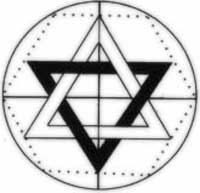 Seal of the Martinist Order. More: Martinism |
By the beginnings of the 20th century, the Martinist Orders -- and many others -- were firmly aligned with the ideology of Synarchy. In 1921 the Martinist and Synarchist Order was founded in France. There were also explicitly Synarchist Masonic lodges formed in France. However, Synarchy has not only had influence over the occult world, but also over politics. As we have seen, Synarchy outlined a specific programme for the take-over of states. But Saint-Yves’s aims went much further than that -- he wanted the whole of Europe to be governed by Synarchy. Right from the start, an important part of the Synarchist agenda was the creation of a United States of Europe, advocating the removal of national boundaries, customs duties, and so on.
This continued to be a central objective of Synarchy. In fact, a Synarchist document published in the 1930s refers to one of their key aims as being ‘the formation of a federal European Union.’ It advocated a United States of Europe -- although it would be a Europe that, for economic reasons, would be dominated by France and Germany.
As we saw earlier, Synarchy favours undemocratic and totalitarian regimes -- they are, after all, easier to gain control of. And there is a definite connection between Synarchist groups and the origins of Fascism in Europe in the late 1910s and early 1920s.
An organisation called the International Synarchist Movement was created in response to the Russian Revolution of 1919. According to French researchers, this was largely behind the rise of Fascism in Italy -- and the creation of the Pan-European Movement in 1922. As might be expected, Synarchy also had some influence on the development of Nazi ideology, although Synarchists had reservations about the Nazis emphasis on German nationalism and the Messianic cult of Hitler.
Synarchy continued to thrive in Saint-Yves’s native France. Synarchist groups were behind a wave of right-wing terrorist attacks in the 1920s and 30s. In the 1930s a Frenchman named Viven Postel du Mas (of whom more later) wrote a notorious document called the Synarchist Pact, which became their manifesto.
In 1932, a society called the Synarchist Empire Movement was founded in France, which was described by one commentator as ‘a secret society with very specific and limited membership, following a definite politico-economic programme’. This was behind right-wing terrorist groups such as the CSAR (Secret Committee for Revolutionary Action) -- most of the CSAR’s members were part of the Synarchist Empire Movement.
In 1941, in Vichy France, a report by the police warned of a plot by Synarchists to take over the government, which noted the close relationship between the Synarchist movement and the Martinist Orders. In fact, during the trial of Marshall Pétain, the President of the Vichy government, in 1945, questions were asked about his connection with the Synarchist Pact.
The point is that Synarchy was taken very seriously by French authorities in the 1930s and 40s. The term has entered the French political vocabulary (although the French press often use the term ‘synarchy’ to refer to any political or economic conspiracy, such as price-fixing cartels).
After the War, Synarchy adopted a lower profile, but it is still very active. In fact, in recent years Synarchist groups have begun to act more openly both in Europe and in Britain.
But what has all this has got to do with the Sphinx?
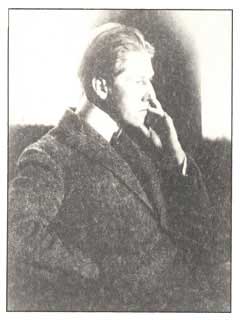 RA.Schwaller de Lubicz. Image from: arlesquint.free.fr |
We personally find nothing intrinsically reprehensible about being an occultist, but it is curious that this aspect of Schwaller de Lubicz’s life is seldom mentioned. But, given the facts, we don’t find it surprising that these authors gloss over his political ideology.
Born in Alsace-Lorraine in 1887, he was very active in the Parisian occult scene in the 1910s. He was an alchemist, whose particular claim to fame was that he was at one time believed to be the mysterious Fulcanelli, author of the seminal book The Mystery of the Cathedrals. In fact, Schwaller de Lubicz was not Fulcanelli, although he claimed -- with some justification -- that Fulcanelli’s book was based on his own idea that the Gothic cathedrals encoded alchemical symbolism.
A leading figure in the Paris Theosophical Society, he broke away to form his own occult organisation, which he called Les Veilleurs -- the Watchers -- specifically in order to carry his esoteric ideas into the political arena.
Perhaps it will come as no surprise to discover that he has been described as a ‘proto fascist’. He even claims to have designed the uniform for Hitler’s SA (‘Brownshirts’). Although it is not certain that his claim is true, Schwaller de Lubicz clearly had no problem with people thinking that it was.
One of Schwaller de Lubicz’s ‘Watchers’ was Vivien Postel du Mas, the man who wrote the Synarchist Pact of the 1930s. Through du Mas, Schwaller de Lubicz had a particular influence on Hitler’s Deputy, the tormented and complex Rudolf Hess.
Schwaller de Lubicz was anti-Semitic and racist -- and, like the Nazis, thought that women were inferior to men. For example, he taught that women were intellectually incapable of understanding the Hermetica.
All this is important, because it is impossible to separate Schwaller de Lubicz’s political, Synarchist beliefs from his work as an Egyptologist, the work that certain authors so admire.
Schwaller de Lubicz settled in Egypt in 1938 and for the next 15 years studied the symbolism of the temples, particularly Luxor, finding precisely what he was looking for, which was proof that the ancient Egyptians were the ultimate examples of Synarchy, because the were ruled by a group of initiates. This may be so, but then prejudice and fanaticism blinded Schwaller de Lubicz to certain facts about Egypt. For example, he claimed that there were no blacks in Pre- and Early Dynastic Egypt, despite abundant archaeological evidence to the contrary.
So this is the man who is so revered by some of the most influential authors in the Alternative Egypt field. John Anthony West has a particular reverence for him, and wrote a book, Serpent in the Sky, presenting Schwaller de Lubicz’s ideas to a popular audience.
Interestingly, it is mainly because of his hero’s beliefs that West came to believe that the Sphinx was built by people from Atlantis and is much older than mainstream Egyptologists think. Above all, he seized on Schoch’s work on the water erosion of the Sphinx as evidence of the involvement of Atlanteans.
It is important to realise that Schwaller de Lubicz believed in the antiquity of the Sphinx because Saint-Yves did, and that West believes it because Schwaller de Lubicz did. So there is a direct line from Saint-Yves to us today.
But there are problems with West’s claims about the Sphinx. Not only does he over-ride Schoch’s expertise when it comes to dating, he also does not appear to realise that Schoch has proved him just as wrong as conventional Egyptologists. Schwaller de Lubicz and West believed that the erosion was caused by a flood, or series of floods, whereas Schoch found that it was caused by centuries of exposure to rain.
West and Hancock argue that the Sphinx was built by a lost civilisation, not by the ancient Egyptians. Where have we heard that before? Saint-Yves was the person who single-handedly introduced the idea of Atlantis as an ancient superpower -- and that they had carved the Sphinx -- which was enthusiastically taken by many occultists, such as Madame Blavatsky and, of course, Edgar Cayce.
So must of us, without knowing it, have been exposed to the insidious and very scary beliefs of Saint-Yves in one form or another. We may think that we can accept his and Schwaller de Lubicz’s historical ideas and reject the politics, but they simply can’t be disentangled. It was never intended that they should be. If you accept one, you are tacitly swllowing the other.
The problem with this particular brand of Alternative Egyptology is not so much its flawed nature, but what it -- whether accidentally or deliberately -- opens us up to. History should have told us that the most dangerous ideas are those that grab us totally, hearts, minds and imaginations.
There are real, exciting mysteries about ancient Egypt. Mainstream Egyptology does tend to be arrogant and dismissive of new ideas and evidence. But it is precisely because the field is wide open that it can be abused. Let’s not let our guard down because we crave signs and wonders.
There are those who rely on us losing our critical faculties as soon as we hear the magic words ‘ancient Egypt’ or ‘lost civilisation’. Whether it’s the Vril Society or the Synarchists or the National Socialist Party -- or, indeed, what we call the Stargate Conspiracy -- it hides the same terrifying agenda. As Sally Bowles said in Cabaret of the rise of the Nazi Party in Berlin: ‘It’s only politics -- what’s that got to do with us?’
People are wary of politics these days -- rightly so -- but they are not so wary of an appeal to the romantic, spiritual and mystical. And therein lies the danger.
As W.B. Yeats so prophetically wrote in his The Second Coming:
Surely some revelation is at hand;
Surely the Second Coming is at hand.
The Second Coming! Hardly are those words out
When a vast image out of Spiritus Mundi
Troubles my sight: somewhere in the sands of the desert
A shape with lion body and the head of a man,
A gaze blank and pitiless as the sun,
Is moving its slow thighs, while all about it
Reel shadows of the indignant desert birds.
The darkness drops again; but now I know
That twenty centuries of stony sleep
Were vexed to a nightmare by a rocking cradle,
And what rough beast, its hour come round at last,
Slouches towards Bethlehem to be born?
SOURCE: Red Ice Creations

No comments:
Post a Comment